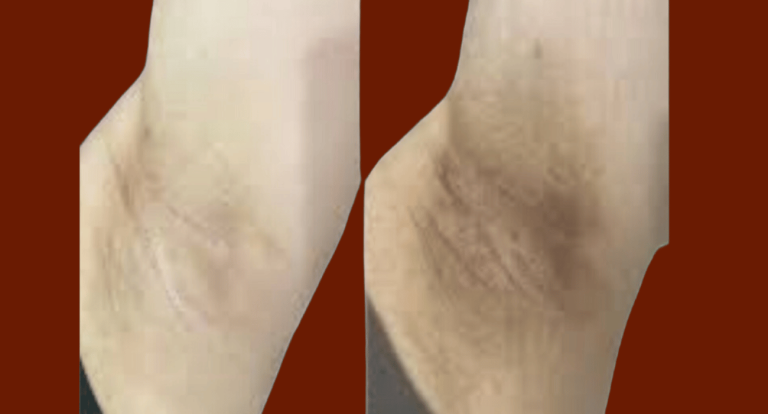Natural Relief for Breast Engorgement: How Cabbage Leaves Can Help Alleviate Swelling and Pain
Anticipating breastfeeding is a major milestone for every new mother, one that is often eagerly awaited long before the baby arrives. However, while some mothers may find breastfeeding comes naturally, many face challenges like poor latch, breast engorgement, and swelling, which can result in shorter breastfeeding durations than expected. These challenges can be daunting, and many mothers find themselves searching for effective ways to alleviate discomfort. Traditional solutions, such as breast softening creams, often fail because they tend to wash off during feedings, leading to frustration.
But what if the solution to these problems was already in your kitchen? Enter cabbage leaves – an unexpected hero in the battle against breast swelling and discomfort. Yes, you read that correctly. Cabbage leaves have become a popular natural remedy for relieving breast engorgement, and research supports their effectiveness. Studies show that cold cabbage leaves can help relieve breast swelling and pain, even improving breastfeeding duration. In fact, a study involving lactating mothers aged 13 to 50 found that using cold cabbage leaves for just 20 minutes significantly alleviated engorgement and discomfort (1).
How to Use Cabbage Leaves for Breast Swelling Relief
The good news is that using cabbage leaves to relieve breast engorgement is simple, natural, and cost-effective. Here’s how to do it:
- Choose the Right Cabbage: Begin by selecting a fresh, green cabbage. Make sure to refrigerate the cabbage so that the leaves are cold when applied to the breasts. The cooling effect is what helps reduce swelling and provides relief from discomfort.
- Prepare the Leaves: Once chilled, remove the outer leaves and wash the remaining leaves thoroughly to remove any dirt or pesticides. Trim off the hard, thick stems from the leaves so that they fit comfortably around your breasts.
- Apply the Leaves: Wrap the cabbage leaves around each breast, ensuring they don’t cover the nipple area. If the cabbage leaves are too stiff or crisp, gently crush them with a rolling pin or your hands to release the natural juices, which enhance their soothing effect.
- Lie Down and Relax: For optimal results, lie down comfortably and keep the cabbage leaves on for approximately 20 minutes. You can secure the leaves in place using a light cotton bra or another soft piece of clothing if needed. It’s important to stick to the 20-minute time limit to avoid any potential impact on milk production.
- Repeat the Process: After 20 minutes, discard the wilted cabbage leaves and repeat the treatment 2-3 times a day, using fresh cabbage leaves each time.
This simple yet effective method, when combined with other strategies like milk expressing and cold packs, can significantly relieve discomfort caused by breast engorgement. It helps reduce swelling and alleviates the pain associated with this common postpartum issue.
Why Cabbage Leaves Work for Breastfeeding Mothers
So, what makes cabbage leaves so effective in relieving breast engorgement? The cooling effect of the cabbage leaves helps constrict blood vessels in the breasts, which reduces swelling and provides pain relief. Additionally, cabbage leaves contain compounds that may have anti-inflammatory properties, further supporting their ability to reduce breast discomfort.
Aside from being cost-effective and natural, cabbage leaves are also readily available – many mothers already have them in their kitchens. This simple remedy can provide significant relief for new mothers experiencing the discomforts of breast engorgement, especially when other methods fall short.
Additional Tips for Relieving Breast Engorgement
While cabbage leaves can be highly effective in managing breast engorgement, there are other helpful strategies you can incorporate into your routine to maximize relief:
- Frequent Nursing or Pumping: One of the best ways to prevent and relieve engorgement is to nurse or pump frequently. This helps empty the breasts, reduce swelling, and promote milk production.
- Warm Compresses: Applying a warm compress to the breasts before nursing can soften the breast tissue, making it easier for your baby to latch.
- Cold Compresses: After nursing, use a cold compress to reduce swelling and soothe any pain. Alternating between hot and cold therapies can help maximize relief.
- Massage: Gently massaging your breasts before and after feedings can help improve milk flow and alleviate the discomfort associated with engorgement.
When to Seek Medical Help
While cabbage leaves can provide temporary relief for breast engorgement, it’s essential to recognize when to seek medical advice. If your engorgement persists for several days, if you experience severe pain, or if you notice redness or fever, these could be signs of a more serious issue, such as mastitis (a breast infection). If any of these symptoms occur, it’s important to consult a healthcare professional promptly for proper treatment.
Additionally, if you find that the cabbage leaf method is not providing adequate relief, or if you have concerns about your milk supply, seeking the advice of a lactation consultant is always a good idea. They can provide personalized guidance to help ensure that your breastfeeding experience is as successful and comfortable as possible.
Conclusion
Breastfeeding is a beautiful and rewarding experience, but it’s not always without its challenges. From poor latch to painful breast engorgement, new mothers often face discomfort that can interfere with their breastfeeding journey. Fortunately, natural remedies like cold cabbage leaves can provide effective relief for breast swelling and engorgement. By following the simple steps outlined above, you can use this kitchen remedy to reduce discomfort and promote longer, more successful breastfeeding sessions.
While cabbage leaves are a helpful tool for managing engorgement, it’s essential to seek professional advice if you experience persistent issues. With the right support and the right strategies, you can enjoy a healthy and comfortable breastfeeding experience with your baby.






